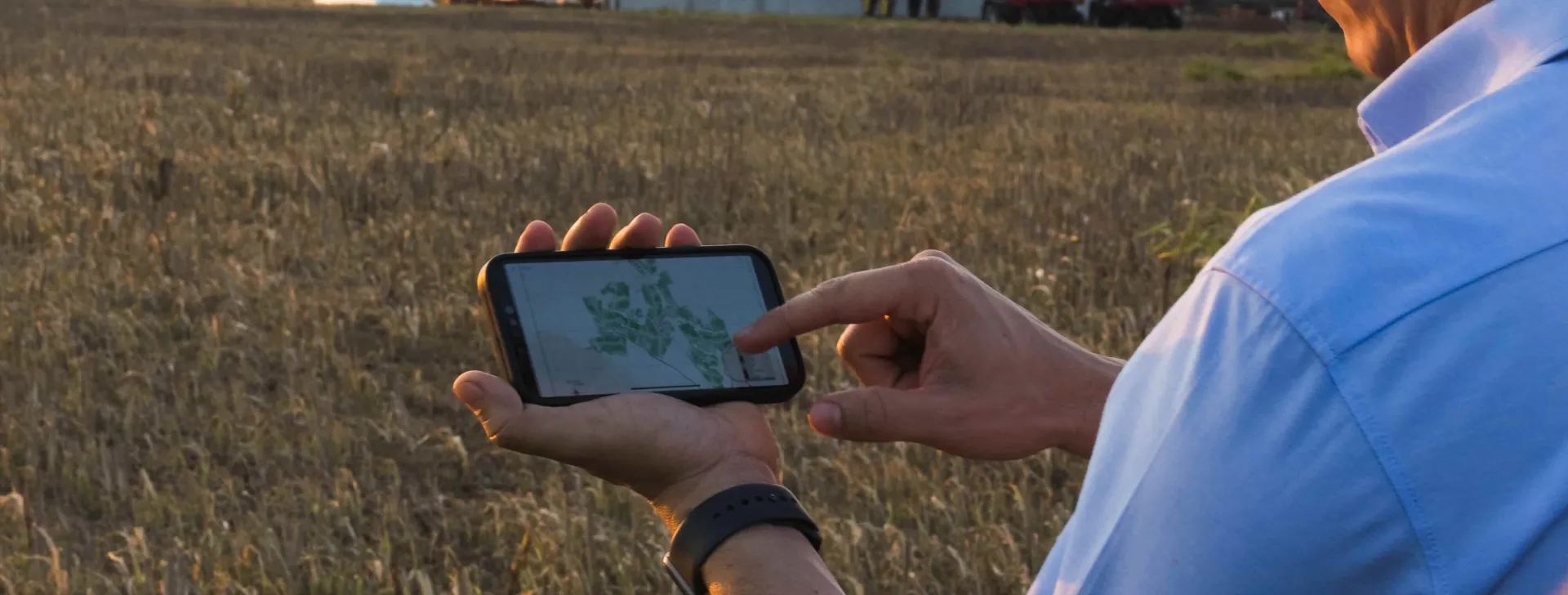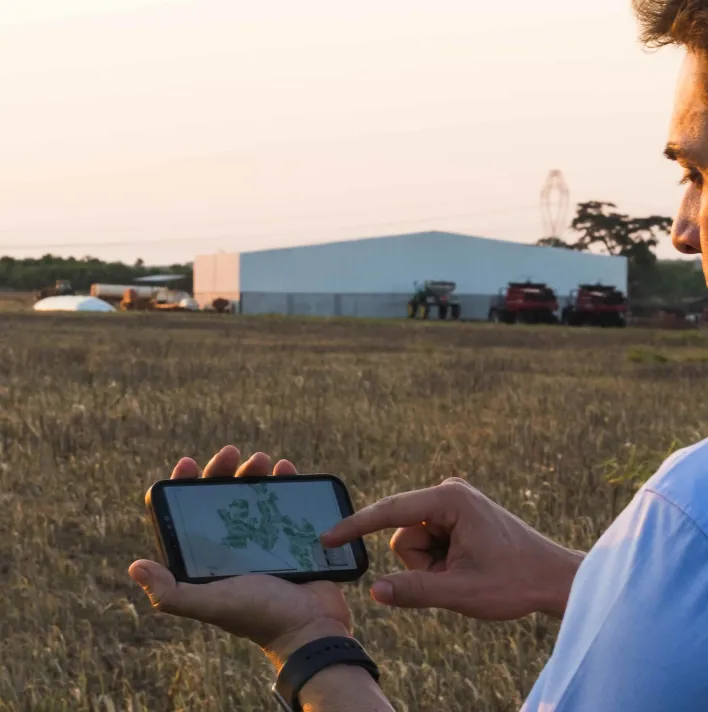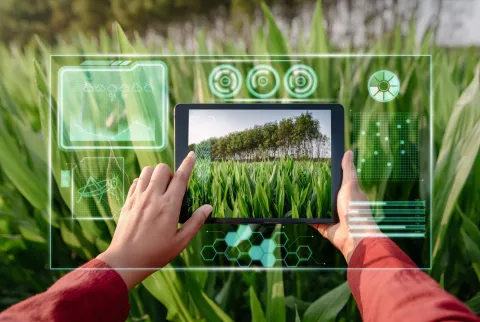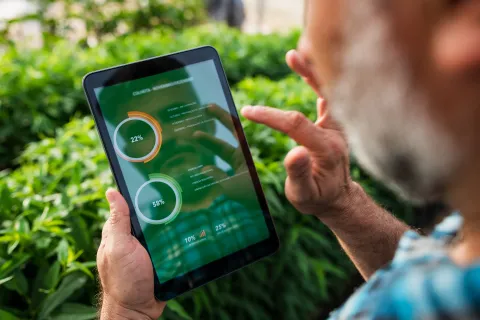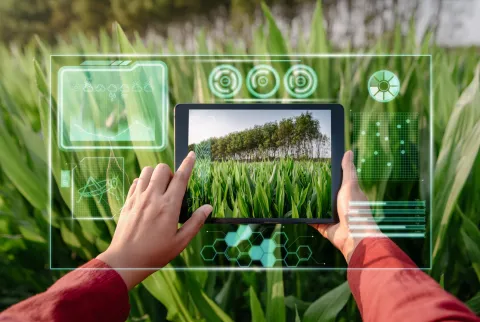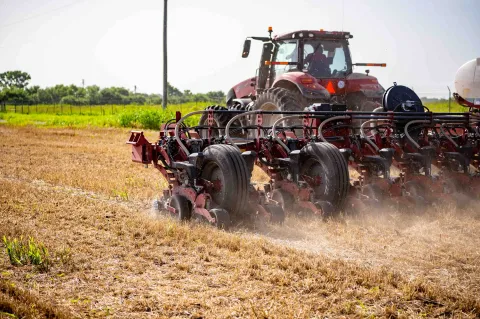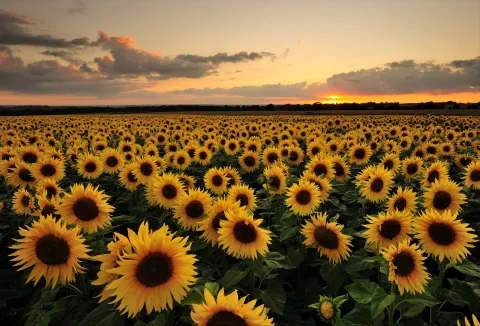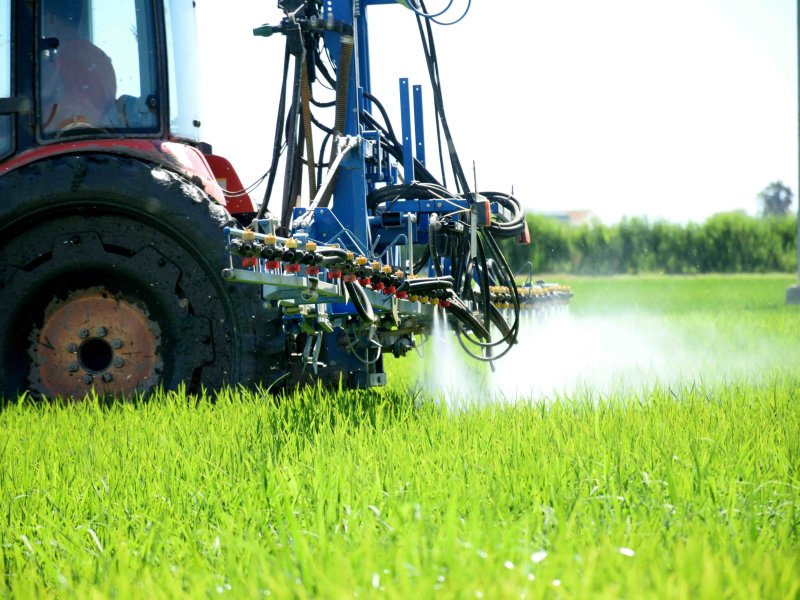
What is precision agriculture?
Precision agriculture is a farming approach that uses technology to monitor and manage field variability in crops. By leveraging tools like GPS, sensors, and data analytics, it allows farmers to optimize inputs such as water, fertilizers, and pesticides, ensuring they are used efficiently and sustainably. This method enhances crop yields, reduces waste, and minimizes environmental impact, leading to more productive and eco-friendly farming practices.
Simply put, precision agriculture leverages digital technology to monitor and enhance farming practices, making them more efficient and sustainable.
Using tools such as satellite data, sensors, weather prediction tools, drones and GPS systems, farmers can monitor their crops and soil in granular, up-to-the-minute detail.
They can then use that information to tailor their farming practices to the specific needs of their crops and soil and apply precise amounts of input – like water, fertilizer or crop protection products – at specific times.
By using only how much input is needed, when and where it is required, growers are able to use smaller amounts of product, more effectively. That means farmers can use their land and resources, such as water, fuel and fertilizer more efficiently, reducing unnecessary costs.
Mitigating the negative impacts of conventional farming practices, precision agriculture optimizes land use. That means farmers can use less to grow more – and so, it is growing in popularity as an efficient method of modern farming.
Where is precision agriculture used?
Precision agriculture can be used anywhere that a farmer wants to use cutting-edge technology to better understand their environment and make deliberate, data-driven decisions to improve their farming.
And because it is so flexible and beneficial for growers, helping them to maximize their yields, minimize resource consumption and farm sustainably, precision agriculture is becoming more popular around the world.

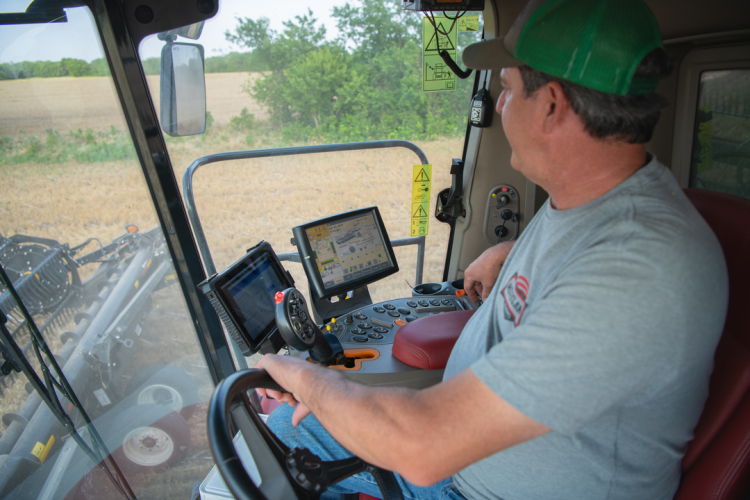
How did precision agriculte come about?
Precision agriculture is as old as the technologies it uses – meaning it’s quite recent. The emergence of technologies like GPS, remote sensing, and data analytics in the late 20th century gave farmers the opportunity to have a more in-depth understanding of what, how and where they grow their crops.
The concept of precision agriculture emerged in the tech boom of the 1980s, when it was used to develop the first input recommendation maps for farmers.
As the types of technologies, such as yield sensors and GPS receivers have increased, they have been added to the toolkit of precision agriculture’s methods, establishing it as a future-focused practice. The rapid development of Artificial Intelligence (AI) over the past decade has accelerated the types of technology farmers can utilize for precision agriculture and the accuracy of it.
What is the difference between precision agriculture and conventional agriculture?
The key difference between the two is found in the specificity that precision agriculture offers - hence its name.
Conventional agriculture often takes a blanket approach to fields and crops, relying on uniform and broad applications of inputs, like crop protection products, fertilizers and water. While this approach allows farmers to grow at scale and over many hectares of land, it does not account for the variability that is found in each row of crop, or handful of soil. Just as the microorganisms found in the soil differ from one field to the next, the pests and diseases that attack crops can vary and often don’t affect the entire field at the same time.
The difference that precision agriculture offers is in the scale and detail of the data itself that farmers can access. By learning about the moisture levels of an individual crop and the composition of the soil it grows in, farmers can then prescribe the plant exactly what it needs to thrive. This means growers can go from a field-by-field, bird’s eye view of their crops to a plant-by-plant approach throughout the crop’s growing cycle.
Data is the new tractor
Agriculture is undergoing a transformation where data, powered by AI and machine learning, is becoming the central driver of productivity. Learn how agricultural productivity is poised to take its biggest leap forward in a century.
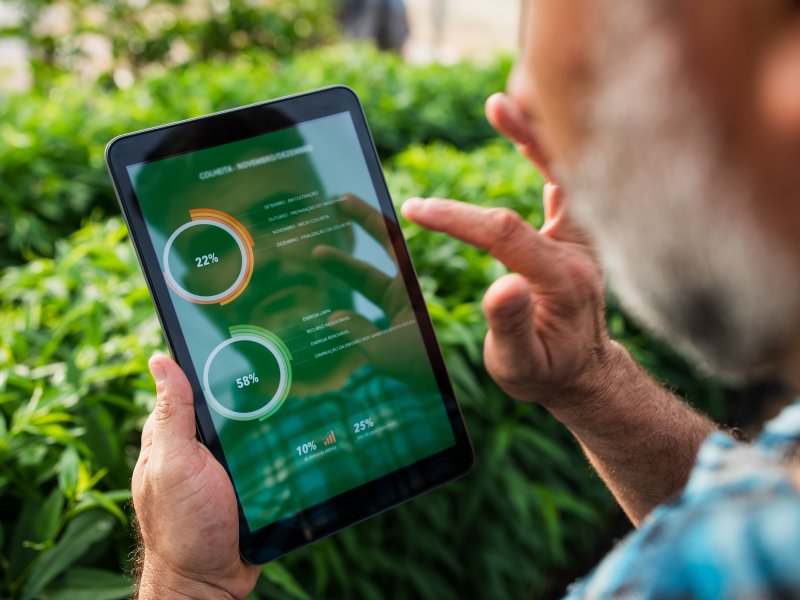
What machinery does precision agriculture use?
Alongside high-tech equipment such as drones and satellites, precision agriculture also utilizes farm machinery equipped with technology to improve overall farming practices.
From tractors equipped with GPS and sensor systems, to irrigation systems that automatically switch on in certain conditions, this machinery gives farmers the information they need to make better decisions.
This machinery helps them to use their resources more efficiently too, as they can use precise amounts of crop protection products, when and where they are needed.
For example, farmers can use GPS technology to produce tailored maps with specific fertilizer needs – and then use the GPS to steer the tractor around their fields, following the map.
Artificial intelligence (AI) has supercharged the effectiveness of precision agriculture, giving farmers more data than ever before to grow healthy crops.
From predicting on-farm weather patterns, to tracking key sustainability emissions, to monitoring disease and pest pressures, AI-enabled systems give growers the real-time data they need to make effective decisions. The ability of AI to process and categorize vast amounts of this data, from multiple sources, means it can offer farmers practical advice on inputs and crop management.
Syngenta’s Cropwise AI tool is one example of this. Combining advanced machine learning algorithms and data analytics with decades of extensive agronomic expertise, the system offers growers tailored recommendations for precise input applications, product placement, and strategies for pest and disease control.
These targeted tips mean farmers can improve their yields, while reducing their environmental footprint.
With rapid advancements in AI, future iterations of the app are expected to include the ability to detect and identify pests and diseases early, for proactive and precise management strategies, alongside sustainability analytics that measure the environmental impact of farming and offer tips to reduce a grower’s carbon footprint.
-
Optimized resource management
AI in precision agriculture optimizes the use of resources like water, fertilizers, and crop protection products by providing precise recommendations based on data analysis.
-
Enhanced crop monitoring
AI-powered drones and sensors enable real-time monitoring of crop health, detecting early signs of diseases and pests for timely interventions.
-
Data-driven decision making
Machine learning algorithms analyze agricultural data to help farmers make informed decisions about planting, crop rotation, and harvest times.
